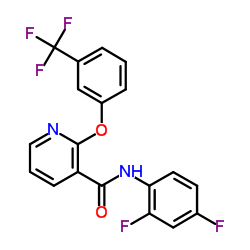Spatial variation in the degradation rate of the pesticides isoproturon, azoxystrobin and diflufenican in soil and its relationship with chemical and microbial properties.
Gary D Bending, Suzanne D Lincoln, Rodney N Edmondson
Index: Environ. Pollut. 139(2) , 279-87, (2006)
Full Text: HTML
Abstract
The extent of within field variability in the degradation rate of the pesticides isoproturon, azoxystrobin and diflufenican, and the role of intrinsic soil factors and technical errors in contributing to the variability, was investigated in sites on sandy-loam and clay-loam. At each site, 40 topsoil samples were taken from a 160 x 60 m area, and pesticides applied in the laboratory. Time to 25% dissipation (DT25) ranged between 13 and 61 weeks for diflufenican, 5.6 and 17.2 weeks for azoxystrobin, and 0.3 and 12.5 weeks for isoproturon. Variability in DT25 was higher in the sandy-loam in which there was also greatest variability in soil chemical and microbial properties. Technical error associated with pesticide extraction, analysis and lack of model fit during derivation of DT25 accounted for between 5.3 and 25.8% of the variability for isoproturon and azoxystrobin, but could account for almost all the variability for diflufenican. Azoxystrobin DT25, sorption and pH were significantly correlated.
Related Compounds
| Structure | Name/CAS No. | Molecular Formula | Articles |
|---|---|---|---|
 |
diflufenican
CAS:83164-33-4 |
C19H11F5N2O2 |
|
Multiresidue method for the determination of 13 pesticides i...
2011-09-15 [Talanta 85(3) , 1500-7, (2011)] |
|
Single drop microextraction and gas chromatography-mass spec...
2013-12-01 [Environ. Monit. Assess. 185(12) , 10225-33, (2013)] |
|
Rainfastness and adsorption of herbicides on hard surfaces.
2005-08-01 [Pest Manag. Sci. 61(8) , 793-8, (2005)] |
|
Evolution of soil biological properties after addition of gl...
2009-07-01 [Chemosphere 76(3) , 365-73, (2009)] |
|
Use of metabolic control analysis to give quantitative infor...
2009-10-01 [New Phytol. 184(2) , 330-9, (2009)] |